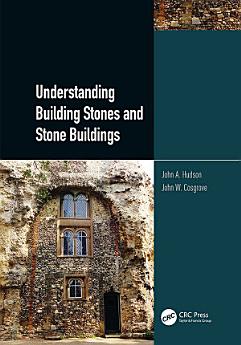Understanding Building Stones and Stone Buildings
ଏହି ଇବୁକ୍ ବିଷୟରେ
The sequence of the historical architectural styles of stone buildings is explained—from the early days through to postmodern buildings. Special attention is paid to two famous architects: the Roman Vitruvius and the English Sir Christopher Wren who designed and supervised the construction of St. Paul’s Cathedral in London. To demonstrate many of the concepts presented, two exemplary stone buildings are described in detail: the Albert Memorial in London and Durham Cathedral in northern England. The former building is interesting because it is comprised of a cornucopia of different building stones and the latter building because of its architecture and sandstone decay mechanisms. In the final Chapter, ruined stone buildings are discussed—the many reasons for their decay and the possibility of their ‘rebirth’ via digital recording of their geometry.
The book has over 350 pages and is illustrated with more than 450 diagrams and colour photographs of both the various stones and the associated stone buildings. Readers’ knowledge of the subject will be greatly enhanced by these images and the related explanatory text. A wide-ranging references and bibliography section is also included.
ଲେଖକଙ୍କ ବିଷୟରେ
Coming from a long line of stone masons and mining engineers, John A Hudson graduated from the Heriot-Watt University, UK, and obtained his PhD at the University of Minnesota, USA. He spent his professional career in consulting, research, teaching and publishing in engineering rock mechanics, and was awarded the DSc. degree by the Heriot-Watt University for his contributions to the subject. He authored many scientific papers and books, and was the editor of the 1993 five-volume "Comprehensive Rock Engineering" compendium, and from 1983–2006 editor of the International Journal of Rock Mechanics and Mining Sciences. Since 1983, he has been affiliated with Imperial College London as Reader, Professor and Emeritus Professor. In 1998, he became a Fellow of the UK Royal Academy of Engineering and was President of the International Society for Rock Mechanics (ISRM) for the period 2007–2011. Additionally, he completed consulting assignments in many countries. In 2015, the prestigious ISRM Müller Award was conferred on Professor Hudson in recognition of "an outstanding career that combines theoretical and applied rock engineering with a profound understanding of the basic sciences of geology and mechanics".
John Cosgrove is a Professor in the Department of Earth Sciences and Engineering, Imperial College London, UK. He obtained both his MSc (1969) and PhD (1972) from Imperial College. Following a two-year Post-doctoral Fellowship at MacMaster University, Hamilton, Ontario, Canada, he returned in 1973 to Imperial College to take up a Lectureship and has since been promoted to Professor. He won the Paul Fourmarier Gold Medal, awarded by the Royal Academy of Belgium in 2005 for work on fluid induced failure in the crust and has also received awards for excellence in teaching from Imperial College. He was responsible for the M.Sc. course in Structural Geology & Rock Mechanics for the period (1978–1998). His present research interests relate to the interplay between stress, fractures and fluid flow in the Earth’s crust. His earlier co-authored book (Price N.J. & Cosgrove J.W. 1990 "Analysis of Geological Structures") has been used worldwide. He has worked extensively on research for the hydrocarbon and mining industry (the dewatering of basins and the impact of the resulting fluids on mineralisation and hydrocarbon migration & concentration), radioactive waste disposal and other rock mechanics applications. He has a strong interest in the many geological aspects of building stones and the related architectural aspects as is manifested in this book.







